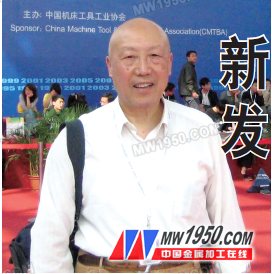
Sun Jianing, a subsidiary of Shanghai University of Technology
In the 60 years since the founding of the People's Republic of China, China's gold cutting tools have developed by leaps and bounds, and the reform and application of twist drills is catching up with the international advanced level. On the occasion of the 60th anniversary of the founding of Metalworking, in order to bear in mind the selfless dedication of generations of gold-cutting workers, I was invited to review the history of the innovation and development of the motherland and look forward to the future of development.
Drilling accounts for a large proportion of gold cutting, second only to turning. The main tool for punching holes in solid material is a twist drill. The use of twist drill is often the key process of hole machining, because the shape and position errors of hole expansion, boring, reaming and hole are directly related to the accuracy of drilling, ensuring drilling accuracy, improving drilling efficiency and prolonging bit life. Reasonable use and reform of the target of the drill bit. Over the past decades, China's gold-cutting workers have accumulated rich experience, and many great kings and model workers have emerged, making great contributions to the motherland's gold-cutting and socialist construction.
The material of the twist drill in the 1950s and 1960s was basically high-speed steel, which was limited by the thermosetting properties of the material, and the cutting speed was generally 20-30 m/min. The reform of the driller by the worker's master can only be a blade change.
In 1958, I participated in the activities of the Shanghai Science and Technology Association. In the Jinchee Group activities, I assisted the general manager of the Shanghai Boiler Factory, the national model worker Li Fuxiang, to draw a drill map and summarize the materials. I once invited Master Li Fuxiang to teach at the Shanghai Machine Manufacturing School where I was teaching. I used a set of 17 drill bits on the spot as a model for our study and promotion. I also introduced it in the tooling course. The main drill types of the 17 drill bits include chip drill, integrated drill, double, triple top angle drill, thin plate drill, copper drill, flat drill, and composite drill. Li Fuxiang's hand-type sharpening is easier to master, and the workers' masters like it very much. They have been around for decades, and today there are still some masters in some SMEs. Unfortunately, in 1963, Master Li Fuxiang suffered from leukemia during his studies at Jiading University of Science and Technology. He left us prematurely. 17 drill bits were also taken over by the Red Guards during the Cultural Revolution. It is gratifying that Li Fuxiang's reformed drill type has remained in my heart.
The Li Fuxiang drill I have used and promoted has: 1 chip drill: suitable for drilling medium-sized steel parts, with good chip and chip removal effect. 2Comprehensive drilling: Grinding 90°~120° double apex angle, double large back angle, transverse blade grinding is narrow and sharp, suitable for cast iron. In 1964, I went to the Shanghai Heavy Machinery Plant and saw Master Gu Zhenhai using φ 48mm integrated drilled cast iron. The feed rate has reached 2.2mm/r. 3 thin plate drilling: grinding the three points, center positioning, outer blade nesting, drilling holes rounded. 4 flat head drill: centering with the drill tip, the two main edges drill a 180° flat bottom surface, which is equivalent to expanding the platform. As shown in Figure 1.

In 1953, Ni Zhifu creatively grinded the indented circular arc edge to solve the problem of drilling hard steel plates. Since then, the Ni Zhifu drill has been promoted in the north. In 1956, I saw the information published by Ni Zhifu and Yu Qixun ("Mechanical Workers", No. 12, 1956). At that time, they were sharpened according to the pattern and introduced into the classroom. After the 53 type, 56 type, 58 type to 64 type has been relatively mature. In 1964, at the Beijing Science Hall, Ni Zhifu read the Ni Zhifu drill paper on behalf of the Chinese working class, and theoretically analyzed the advantages of Ni Zhifu's drill blade. On May 14th, 1965, at the National Tools Exhibition, I listened to Ni Zhifu's report. In the class, I bought two drill bits to learn from Master Ni. I mastered the essentials of manual sharpening. The trimming blade should be turned into the knife and finally reach the desired position). For more than 40 years, there has been no continuous study, application, promotion, and research group drills. In 1967, I operated the Z35 radial drilling machine at the school. When machining 45 steel φ 39mm×180mm hydraulic cylinder, use f =0.9mm/r, n =180r/min to improve work efficiency by 4 times, and also for type 64 drill tip. The problem of insufficient strength has been improved.
Next page
Rubber Wheel,Barrow Wheel,Pneumatic Rubber Wheel
Shengao Special Hand Truck Co., Ltd. , http://www.bestgardencarts.com
